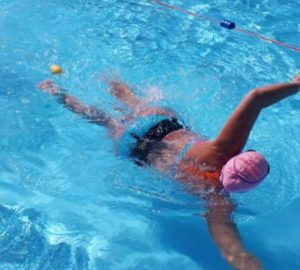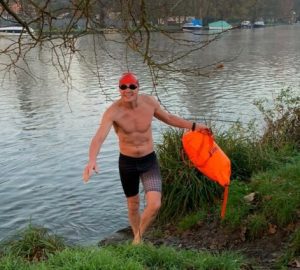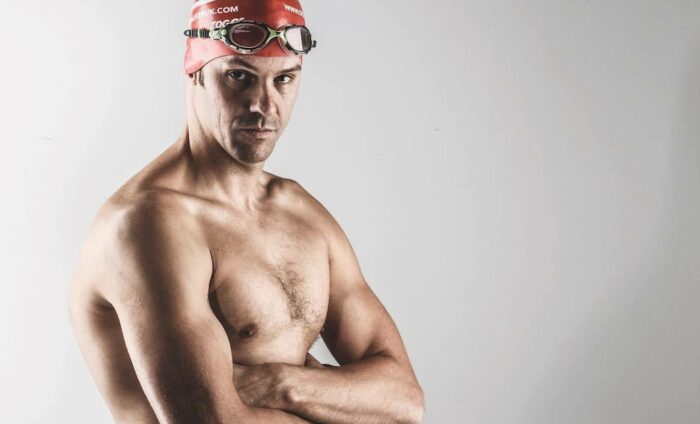
All in the head
Looking forward in swimming is the equivalent of looking at the sky when on land, explains Adam Walker
The Ocean Walker swimming stroke technique was created by Adam Walker, the first British person to swim the Oceans Seven, seven of the toughest ocean swims in the world. Adam ruptured his bicep tendon after swimming the English Channel and was advised not to swim again. Adam didn’t want to stop swimming, and so developed the Ocean Walker stroke. “I became very aware of my body position and how it was moving through the water,” says Adam. “My initial goal was to find a way to carry on swimming by offloading pressure on the shoulders. A gentle elbow push in conjunction with 180 degree hip rotation not only took pressure off, it created more power for less effort. In a matter of weeks I was faster, more efficient and using less energy.” In this new series, Adam will provide you with crucial tips in order to swim fast, efficiently and injury-free. This month, he looks at the importance of head position.
The head position is where I begin in all my coaching sessions. Not only should the head be still, you should be looking downward in a neutral position. This is the equivalent of looking forward while standing up, which we all do. If you look up when swimming you engage extra muscles and put strain on the neck. Over longer distances you will start to feel the strain and potentially develop neck issues.
“A flat body position places the neck and lower back under strain due to the prone positioning of the body,” says osteopath David Pickering. “Amateur and ‘weekend warrior’ swimmers are more susceptible to injuries affecting these areas, owing to lower levels of fitness and strength, rather than elite swimmers.”
The head acts like a boat rudder. Depending on the direction or angle of your head, your body will follow. Your arm strokes can compensate for any head movement to keep yourself in a straight line, but this uses energy and increases drag as you are moving your body through more water than necessary and swimming unnecessary extra distance.
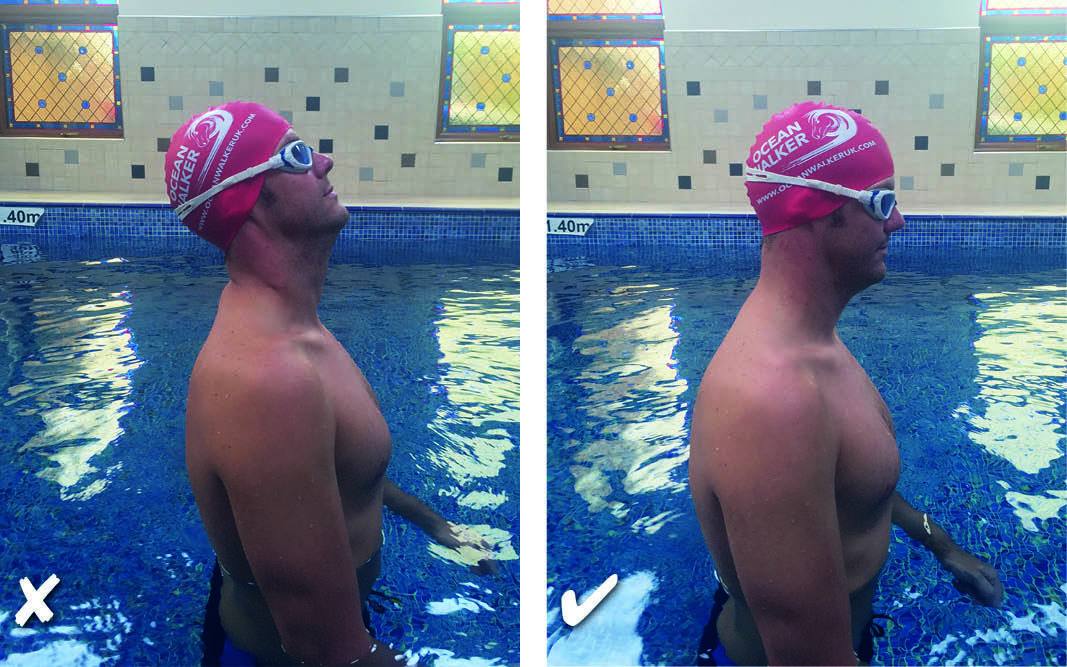
Don't look up!
Swimming with your head up, looking forwards, puts pressure on the spine – resulting in sinking legs. If you look straight down your head will be more immersed, which will help bring your hips and legs up – it’s physics!
The benefits of a neutral head position
You can sight and breathe easily from the downward head position used in the Ocean Walker technique. As the eyes just clear the water there is minimal lifting of the head –saving energy, reducing stress on the neck and shoulders and keeping the hips and legs up in order to keep the body as efficient as possible and reduce drag.
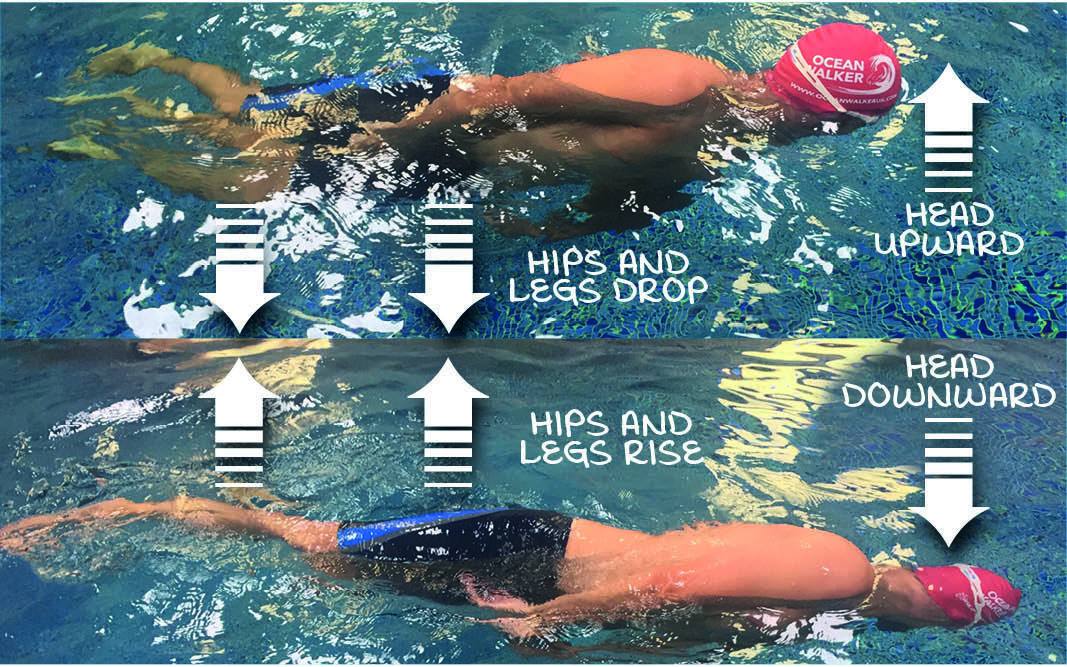
Editor Jonathan attended an Ocean Walker one-day swim camp to learn more about the Ocean Walker technique.
The day started with a meet-and-greet withthe other swimmers on the course. Laura had undergone two operations on her shoulder and was desperate to find a way to keep swimming; likewise Sara, training for a 10k but suffering from shoulder pain. Belinda was a new swimmer learning freestyle for the first time. What united all the swimmers on the course was shoulder problems, although the Ocean Walker technique is designed for all swimmers. “The Ocean Walker technique is for everyone, Channel swimmers or beginners,” says Adam.
Introductions over, Adam spent the morning explaining the Ocean Walker stroke before we got in the pool. The pool training started with Adam and Ocean Walker coach Gemma videoing our front crawl strokes before Adam demonstrated his swimming style. It is a beautiful and efficient stroke, and one that we were all keen to emulate. Breaking down the habits of decades is hard to do though, and progress initially seemed slow. It was like learning to swim from scratch! Adam broke his stroke down into five steps with different focus points in each. By the end of the day, following these steps, we all saw improvements in our technique, stroke rate and speed. Now comes the difficult bit: practice!
Find out more at oceanwalkeruk.com
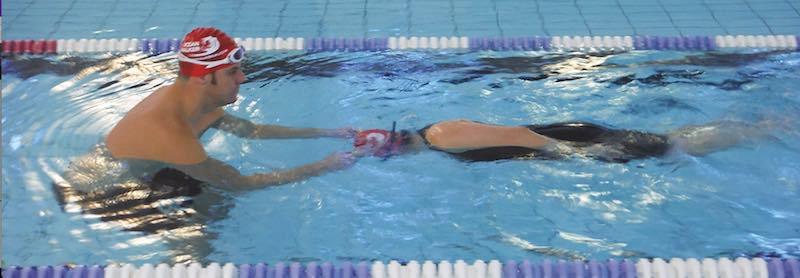
Adam encourages a swimmer to keep a still head
Image credit: Ocean Walker





